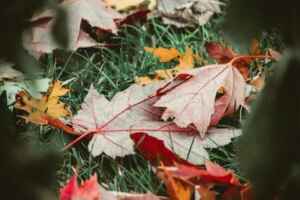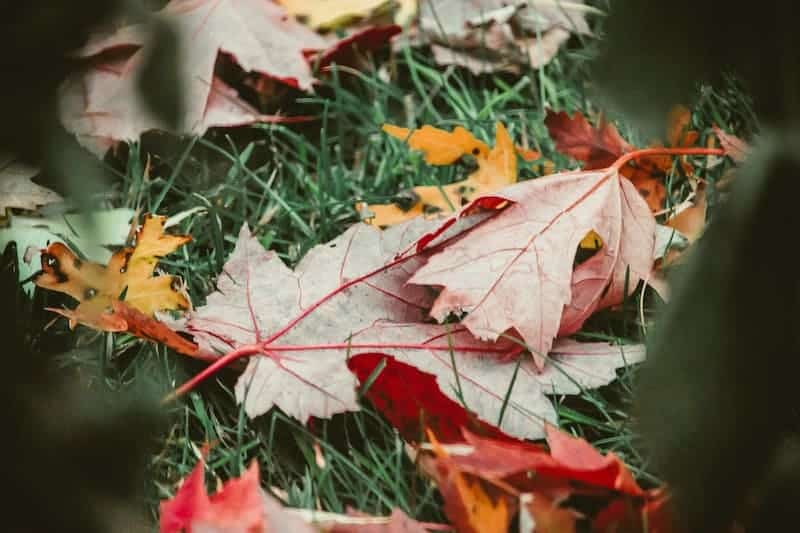How Long Does Grass Take To Die If It Is Covered?
Your lawn can be a beautiful addition to your home, but you must take steps for the grass to thrive. Grass requires nutrition, water, and sunlight as well as regular mowing so that they don’t become overgrown or die prematurely. If part of the lawn gets covered by debris it will cause the grass to die.
How long can grass be covered before it dies? On Average grass takes two weeks to die if it doesn’t get proper sunlight and water. If you have pets that poop on your lawn, the grass may die sooner. Multiple things can cover and suffocate the grass. As soon as you notice part of the lawn being covered by leaves or other objects, remove them immediately.
The longer it takes to get rid of the debris, the more likely it is that the grass will not grow back and you will need to replace it. If the same object covers the same part of your lawn over and over again, part of the grass will die and you may need to replace it.
What Happens If I Don’t Remove Debris?
When you live on a property that has a large front lawn or backyard area, it may be tempting to let the grass sit unattended and stay covered with debris. Even though you don’t intend on having the best lawn in the neighborhood, there are some good reasons why it’s important to take care of your own grass. In the end, you’ll be glad that you took care of your lawn to ensure its health and beauty.
Debris on the lawn is a very common issue that homeowners face each year. If you allow debris to stay on your grass too long, it will eventually kill off the area of land because of a lack of sunlight or nutrients. It’s important to take care of your lawn once seasonal weather has passed and make sure there are no leaves, twigs, or other pieces of unwanted objects. It’s not a job that can be taken lightly because of how the debris will affect your grass if you let it get out of hand.
Types of Debris That Can Affect Your Lawn
There are several types of debris that can affect the health of your lawn.
Grass Cuttings Should Be Removed After Each Mowing
It’s important for healthy yard drainage during rainstorms. Leaving grass cuttings on the lawn after you have mowed will cause the areas under the cuttings to die. A few days following a heavy rainstorm, look carefully around your property for signs of clogged grass. The grass will be laying on the ground in a way that is completely different from how it usually spreads out while mowing. Those clumps of cut grass will cover up the live grass and suffocate it from the sunlight it requires to thrive.
Trees Drop Their Leaves In The Fall
 Most people know this, but some may be unaware of how much leaf debris they’re leaving in place when cutting their lawn short or not at all before winter months begin. According to one site’s data, you can expect about 8-10 inches of fallen leaves per tree if there is nothing planted below them.
Most people know this, but some may be unaware of how much leaf debris they’re leaving in place when cutting their lawn short or not at all before winter months begin. According to one site’s data, you can expect about 8-10 inches of fallen leaves per tree if there is nothing planted below them.
This means that if there are two trees on every front yard (at least) then there will probably be enough fallen leaves between all yards in your neighborhood each year to spread disease among most homes.
Even if you live in an apartment building with no yard area and a small number of units, you still need to pay attention to your lawn care practices so that neighbors with yards have a chance at avoiding disease.
Piles of Fall Leaves Will Draw Disease-Carrying Pests
You love having a nice green lawn with no bare spots or weeds sprouting up, but so do pests! Just as they’ll flock toward any kind of food near your house (such as pet waste), they also love eating fallen leaves. This is especially true for pests that can carry a disease from infected animals to your family (which is most of them). These pests are a serious health concern for children, pets, and older people. If you have trouble with pests brought on by piles of fall leaves, you may need to contact a local professional for guidance.
Tree Leaves Will Prevent Grassroots From Growing Below Them
This one is slightly less obvious than the others, but it’s actually just as important for healthy grass – if not more so! Each tree contributes to thousands of pounds of weight per year (depending on its size) which means the heavy foliage and branches can flatten out sections of your yard. This won’t do any good if you’re hoping for grass to grow!
In fact, these trees will hinder fresh growth in several ways: The amount of shade they provide may be enough to kill young roots; They’ll consume a lot of soil nutrients that would otherwise be absorbed and put back into the roots; They’ll cause the grass to be uneven for a longer period of time because it won’t have room to build up even stronger.
Winterizing Your Lawn With A Tarp
If you plan to cover your lawn with a tarp during the winter months, then it’s important to know how much snow will accumulate before you put the tarp down. Generally speaking, most homes get between 8 and 10 inches of precipitation per month, which equates to approximately 2-3 inches of water/snowfall. Using these guidelines as a rough estimate on weather patterns in your area, you can choose the proper size tarp for your home’s square footage and purchase one online or at a local hardware store near you.
When purchasing tarps for covering grass over the winter months, make sure that they are UV resistant! The sun is so strong during different times of year that even when temperatures are freezing cold outside (or even below freezing), the temperature of your grass will be enough to cause damage. By getting a tarp that resists UV rays, you can extend its life in the sun by quite a bit. To find tarps like these, search online for “landscaping tarps.”
Do Not Place Plastic Directly Over Green Grass!
Do not place plastic directly over green grass! If this happens then the snow will melt and seep through the plastic onto your lawn. This could cause mold growth or other ill side effects, so just make sure there are at least 6 inches of snow cover before placing down any kind of covering material. Also, consider where you are located; if it gets really hot during parts of winter or you have long periods without precipitation, then using a tarp or plastic is not recommended.
How Will I Know When My Lawn Is Ready For the Spring Season?
If you look at your grass and it has a brownish color then that is the best time to bring it back to life. If it’s green, then give it another week or two in winter because there’s still plenty of time left before summer. You’ll also want to make sure that you keep an eye out for certain pests (like ants) which might be attracted by the lack of chemicals applied during cold months. It is much easier to remove insects like these during winter than when the lawn is rapidly growing again!
Restore Your Damaged Lawn
It’s important to start off on the right foot with your lawn – this means doing everything you can to promote regrowth. This includes “healing” the damaged soil by digging up at least a few inches of topside and mixing in compost or another topsoil (as long as it’s not contaminated!).
This will help increase nutrient retention and air circulation so that new grass can grow stronger. If you’re planning on adding chemicals then this is the best time to do it; they have more time to work before the roots get stronger again.
Once your lawn is finally growing again, it’s important to keep up with the maintenance by regularly trimming and fertilizing. This will reduce the amount of time you spend mowing, or edging/trimming around hard surfaces like concrete patios. By keeping these elements tidy then you’ll have yourself a lush, beautiful lawn that’s not too difficult to maintain for the whole year.
Take Care of Your Lawn
Most importantly, take care of your lawn during the spring! If you ignore it until summer gets closer then by that time it is too late to repair the damage done by neglect during previous months.
There’s no need to worry about proper cutting or mowing during the winter months because it is too cold for any growth. If you live in a warm climate that gets no frost then you should still check your lawn once in a while, but not as frequently as when it is active and growing.
Only do what is necessary during autumn and winter, keeping an eye out for rodents, snow removal, and other activities that you won’t have to worry about during this time of year. By taking care of your lawn now then it’ll be ready in spring – and will look great all summer long!

